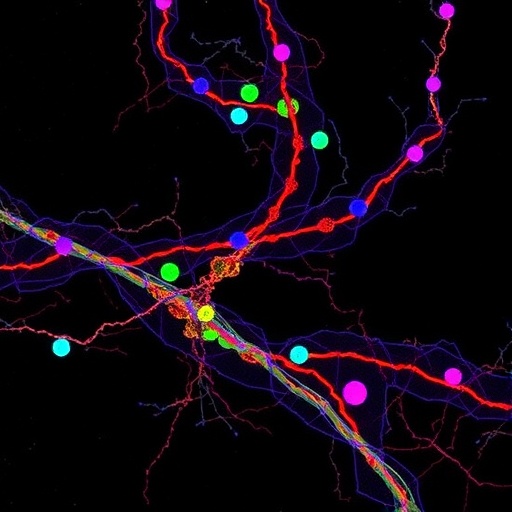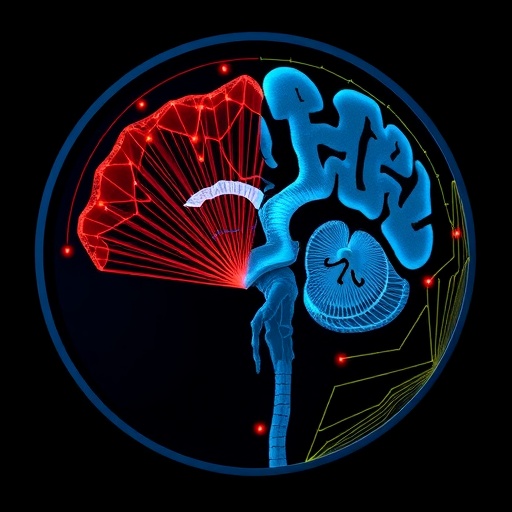Parkinson’s disease, characterized primarily by motor dysfunction and dopaminergic neuron loss in the substantia nigra, has long been studied predominantly from a neuronal perspective. However, the crucial participation of glial cells—traditionally considered mere supportive cells—has gained intense scrutiny. Oligodendrocytes, responsible for myelination of axons, and astrocytes, key regulators of the brain environment including ion balance and metabolic support, do not operate in isolation. Their interactive dynamics profoundly influence neuronal health. The current findings provide compelling mechanistic evidence that disruptions in glial communication directly promote neuronal vulnerability and death in Parkinsonian pathology.
The study pivots on the concept of ferroptosis, an iron-dependent, lipid peroxidation-driven form of programmed cell death distinct from apoptosis or necrosis. Ferroptosis has emerged as a key mediator in various neurodegenerative diseases but remains underexplored in Parkinson’s disease. Zhang and colleagues demonstrate that aberrant signals exchanged between oligodendrocytes and astrocytes trigger ferroptotic pathways in dopaminergic neurons. This cell non-autonomous mechanism highlights the previously underappreciated role of glial modulation in neuron survival, positioning ferroptosis as a central culprit rather than merely an epiphenomenon.
.adsslot_EUMGuf1KQz{width:728px !important;height:90px !important;}
@media(max-width:1199px){ .adsslot_EUMGuf1KQz{width:468px !important;height:60px !important;}
}
@media(max-width:767px){ .adsslot_EUMGuf1KQz{width:320px !important;height:50px !important;}
}
ADVERTISEMENT
Central to this pathological crosstalk is the fibroblast growth factor (FGF) signaling cascade, a versatile pathway implicated in brain development, injury response, and neuroprotection. The research delineates how altered FGF signaling in the oligodendrocyte-astrocyte axis exacerbates oxidative stress and disrupts iron homeostasis. This dysregulation culminates in heightened lipid peroxidation and ferroptotic death of vulnerable neurons. By elucidating these molecular cascades, the study not only unveils new dimensions of cellular interplay in Parkinson’s but also identifies FGF signaling as a promising molecular target for future therapies.
The investigators utilized an array of sophisticated techniques, encompassing transcriptomic analyses, in vitro co-culture systems, and in vivo Parkinson’s disease models. They meticulously mapped the spatial and temporal patterns of FGF ligand and receptor expression changes across glial populations as disease progressed. Functional manipulations of FGF receptors in astrocytes and oligodendrocytes revealed the causal link between dysregulated signaling and neuronal ferroptosis. The study’s comprehensive methodological approach ensures robust and translational relevance of these findings to human Parkinsonian brains.
Notably, the intercellular signaling driving ferroptosis involved a complex network of modulators beyond FGF molecules, including alterations in glutathione metabolism and iron transport proteins. Glutathione depletion and iron accumulation are hallmark features of ferroptosis, and their glial regulation underscores the dynamic and multifactorial nature of this cell death pathway. Zhang et al. highlight how oligodendrocytes contribute to iron overload while astrocytes modulate antioxidant defenses, creating a deleterious microenvironment that ultimately impairs neuronal integrity.
Understanding this glial-neuronal dialogue revolutionizes the conceptual framework of Parkinson’s disease pathogenesis. It suggests that therapeutic strategies aimed solely at neuronal targets may be insufficient. Instead, modulating glial-cell communication, particularly by normalizing FGF signaling and ferroptotic susceptibility, could confer neuroprotection. The study thereby advocates for a paradigm shift in drug development approaches, emphasizing the restoration of homeostatic glial interactions as a cornerstone for innovation.
Another compelling implication of this research is its potential relevance to other neurodegenerative disorders marked by iron dysregulation and gliopathy. Conditions such as multiple system atrophy, Alzheimer’s disease, and amyotrophic lateral sclerosis also exhibit glial abnormalities and ferroptotic features. Therefore, the molecular insights gained here may catalyze broader exploration into common mechanisms of neurodegeneration, fostering the emergence of wide-ranging therapeutic platforms.
The characterization of FGF signaling in glial crosstalk opens avenues for biomarker discovery as well. Detecting brain or cerebrospinal fluid alterations in FGF ligands or receptors could provide early diagnostic tools or markers of disease progression. Furthermore, pharmacological agents targeting specific FGF receptor isoforms or downstream effectors might selectively modulate glial behavior, offering tailored interventions with minimized off-target effects.
Zhang et al.’s study intensifies the debate over iron metabolism’s role in Parkinson’s disease. Iron accumulation in the substantia nigra is a well-documented hallmark, but the cellular sources and trafficking mechanisms remained enigmatic. The demonstration that oligodendrocytes actively participate in iron dysregulation adds critical nuance, implicating these cells as not passive reservoirs but active contributors to neuronal iron toxicity.
On a broader neuroscientific scale, this work emphasizes the importance of intercellular signaling networks in maintaining neural circuit integrity. It challenges reductionist neuron-centric views and elevates glial interactions as vital determinants of brain health. Such insights are invaluable for the design of next-generation neurotherapeutics, moving towards holistic strategies that address the multifaceted cellular ecosystem.
Cumulatively, this landmark investigation by Zhang, Yan, Jiang, and team enriches our understanding of Parkinson’s disease pathophysiology by delineating how oligodendrocyte-astrocyte communication critically mediates ferroptotic neuronal death through FGF signaling perturbations. This novel glial axis represents both a mechanistic breakthrough and a fertile ground for innovative clinical approaches aimed at halting or reversing neurodegenerative processes.
Continued exploration into the temporal dynamics of FGF-mediated crosstalk and ferroptosis could elucidate potential windows for intervention, maximizing therapeutic efficacy. Moreover, integrating these findings with emerging gene editing and molecular imaging technologies could enable precise modulation and real-time monitoring of disease-relevant pathways, propelling Parkinson’s research into a new era.
This pioneering work represents a seminal contribution to neuroscience, marrying cellular biology with molecular signaling to unravel the complex choreography underlying neuronal demise in Parkinson’s disease. It paves the way for transformative research and therapeutic strategies that could alter the trajectory of this relentless neurodegenerative condition, bringing hope to millions worldwide.
Subject of Research: The role of oligodendrocyte-astrocyte crosstalk in mediating neuronal ferroptosis via FGF signaling in Parkinson’s disease
Article Title: Oligodendrocyte-astrocyte crosstalk in Parkinson’s disease mediates neuronal ferroptosis via the FGF signaling pathway
Article References:
Zhang, S., Yan, M., Jiang, X. et al. Oligodendrocyte-astrocyte crosstalk in Parkinson’s disease mediates neuronal ferroptosis via the FGF signaling pathway.
npj Parkinsons Dis. 11, 136 (2025). https://doi.org/10.1038/s41531-025-00995-0
Image Credits: AI Generated
Tags: fibroblast growth factor signalingglial cell communicationglial cells in brain functioniron-dependent cell deathNeurodegenerative disease researchneuronal death mechanismsneuronal ferroptosis mechanismneuronal health and vulnerabilityoligodendrocyte role in neurodegenerationoligodendrocyte-astrocyte interactionParkinson’s disease pathologytherapeutic interventions for Parkinson’s





